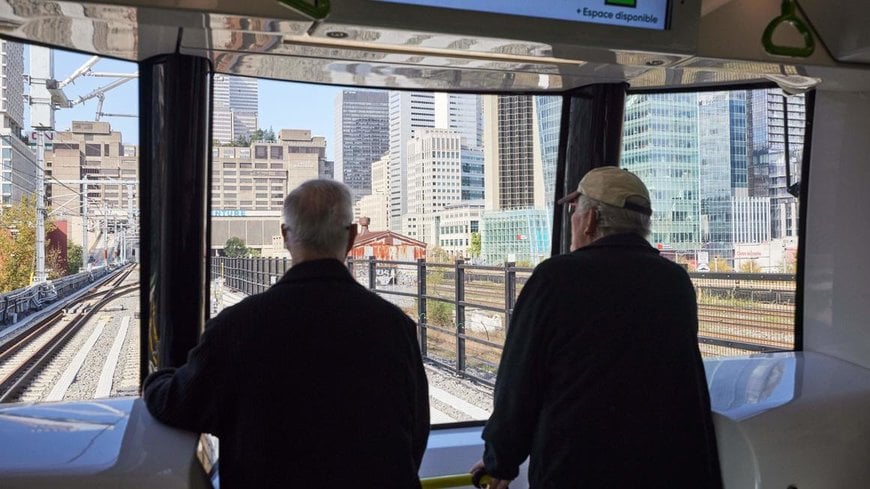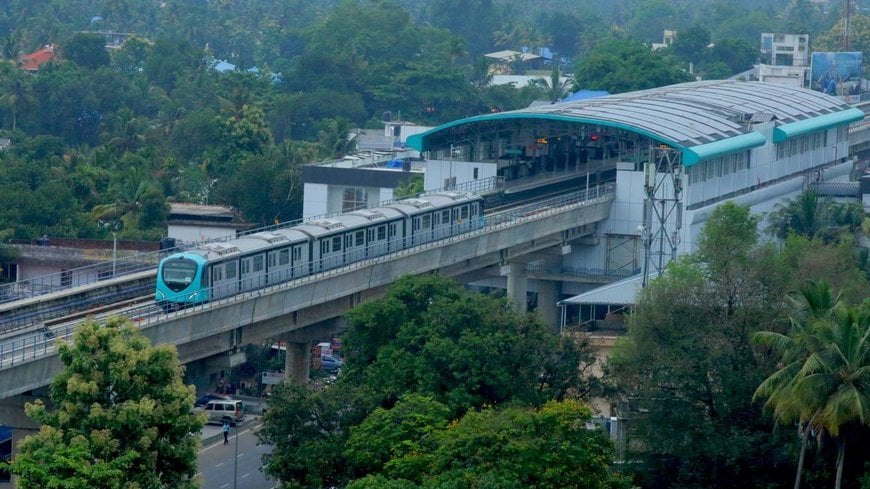Changing populations: How Alstom’s Metropolis metro solutions master mass transit challenges
Mass transit solutions have an increasingly vital role to play in our cities.
www.alstom.com

.Enrique Peñalosa, former Mayor of megacity Bogota, Columbia
As operators grapple with rapidly changing urban demographics, Colin Scott, Technical Director for Alstom’s Urban Rolling Stock Platform, explains why Alstom’s metro solutions need to strike a balance between standardised products and customised solutions.
How will urban transport be impacted by demographic trends?
We live in a rapidly urbanising world. 70% of the earth’s population is expected to live in towns and cities by 2050. We also see a globally ageing population, with more people alive today aged over 60 than under 16.
Demand for mobility solutions in urban areas is then expected to triple, even quadruple in this time frame, creating enormous challenges for urban transport systems in terms of capacity, efficiency and accessibility. Faced with these demographic changes, operators are asking for their new trains to be rapidly delivered and highly reliable from day one.
Mass transit systems around the world are experiencing extreme growth needs. How can Alstom respond to this?
As the global market leader for metros, Alstom is uniquely positioned to meet this growth. The figures speak for themselves: every fourth metro worldwide is an Alstom metro, and 12 billion passengers travel on Alstom’s metros every year. With a portfolio ranging from small rubber tyred metros to large high-capacity metros, our metro business is present on almost every continent. This allows us to be geographically close to our customers while understanding local market contexts.
By combining service-proven components with innovative technologies to enhance reliability, comfort and sustainability, our Metropolis metros are designed to keep cities functioning, no matter what.
One example of a transport system experiencing extreme growth needs is the Delhi metro. Since Alstom built its first metro for Delhi in the early 2000s, user demand has increased by 2,000%. As the trusted partner of India’s transportation systems, we continue to support the country’s growth, with 1,200 metro cars delivered to many Indian cities to date, including Delhi, Mumbai, Chennai, Lucknow, Kochi, Agra, Kanpur, Indore, Bhopal and Pune. Most of our metros are developed and manufactured locally. A further 1,000 cars are being delivered to various projects. In fact, one in every three metro cars in India is made by Alstom.
Are Alstom’s metros really all-inclusive?
The number of people on this planet aged 80 or over is expected to triple in the coming years. This will influence our train design, but age is only one factor. Throughout their lives, passenger mobility may be affected by any number of issues related to age, health or lifestyle. In line with Alstom’s ‘Design for All’ strategy, our design and engineering teams work with global legislation and standards to establish optimal, intuitive design solutions for all passengers including those with reduced mobility. Many of these solutions are already in use in our metros. Some are based on very simple ideas, such as signage consistency and good colour contrast.
Implementing the ‘Design for All’ approach
Variety of seating options for people travelling alone, in groups, elderly people or as families
Multi-purpose areas for people with mobility aids, luggage, prams, etc.
Loading information on trains and platforms. This allows less mobile or less confident travellers to position themselves in front of the train doors before they open
Lights on doors that change colour to show opening or closing status
Simple, consistent pictographs, good lighting design to minimise glare
Availability of consistent audio and visual information
Dynamic route maps
How does Alstom strike the right balance between standardisation and customisation to design its metros?
Our challenge is to maximise standardisation to optimise time-to-market and production costs, while including targeted flexibility to customise our designs. We offer a wide range of interiors and flexible seating configurations without having to make structural changes to the core vehicle design. For example, available passenger space can be optimised by locating equipment above the ceiling or below the floor. This also maximises flexibility for interior layouts.
Our configurations must support both high-capacity solutions for short journeys (by offering longitudinally mounted seats to maximise standing space) and longer journeys with fully transverse seating for greater comfort, and everything in between.
Two examples of layouts that combine different types of seating and multi-functional areas are Grand Paris Express Line 18 and the London Underground.
Reliable metros from day one… is this really achievable?
The more a city depends on public transit solutions, the more dependable those solutions need to be. If they stop, the city stops, too! To achieve reliability from day one, robust train architectures and development processes are crucial, as is intelligent trains that are aware of systems status, all supported by exhaustive testing and comprehensive monitoring.
Finally, operational performance can be further optimised through automation, which enables higher frequencies with shorter headways and greater energy efficiency. Alstom has sold over 6,000 driverless metro cars to over 22 cities worldwide.

www.alstom.com

